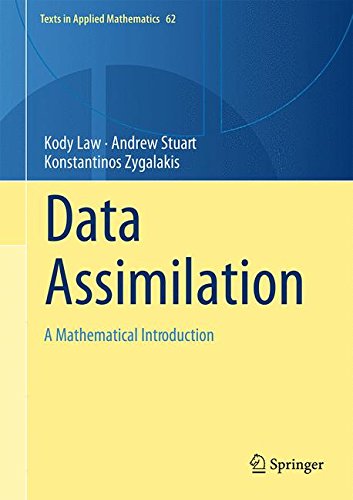
Data Assimilation: A Mathematical Introduction
by K.J.H. Law, A.M. Stuart, K.C. Zygalakis
Publisher: arXiv.org 2015
ISBN-13: 9783319203256
Number of pages: 158
Description:
This book provides a systematic treatment of the mathematical underpinnings of work in data assimilation, covering both theoretical and computational approaches. Specifically the authors develop a unified mathematical framework in which a Bayesian formulation of the problem provides the bedrock for the derivation, development and analysis of algorithms; the many examples used in the text, together with the algorithms which are introduced and discussed, are all illustrated by the MATLAB software detailed in the book and made freely available online.
Download or read it online for free here:
Download link
(2.2MB, PDF)
Similar books
 Optimization Algorithms: Methods and Applications
Optimization Algorithms: Methods and Applicationsby Ozgur Baskan (ed.) - InTech
This book covers state-of-the-art optimization methods and their applications in wide range especially for researchers and practitioners who wish to improve their knowledge in this field. It covers applications in engineering and various other areas.
(7418 views)
 Optimization Models For Decision Making
Optimization Models For Decision Makingby Katta G. Murty - Springer
This is a Junior level book on some versatile optimization models for decision making in common use. The aim of this book is to develop skills in mathematical modeling, and in algorithms and computational methods to solve and analyze these models.
(11582 views)
 Convex Optimization
Convex Optimizationby Stephen Boyd, Lieven Vandenberghe - Cambridge University Press
A comprehensive introduction to the subject for students and practitioners in engineering, computer science, mathematics, statistics, finance, etc. The book shows in detail how optimization problems can be solved numerically with great efficiency.
(19367 views)
 Applied Mathematical Programming Using Algebraic Systems
Applied Mathematical Programming Using Algebraic Systemsby Bruce A. McCarl, Thomas H. Spreen - Texas A&M University
This book is intended to both serve as a reference guide and a text for a course on Applied Mathematical Programming. The text concentrates upon conceptual issues, problem formulation, computerized problem solution, and results interpretation.
(12641 views)